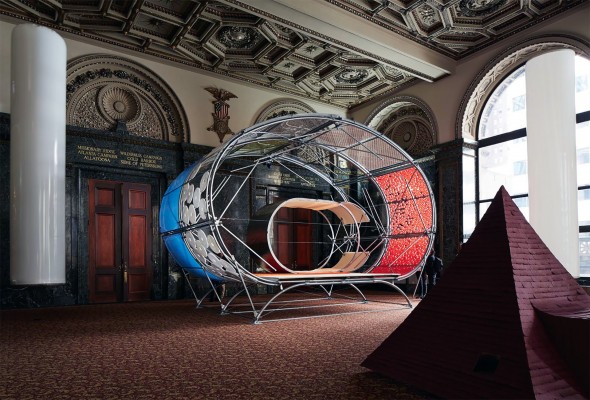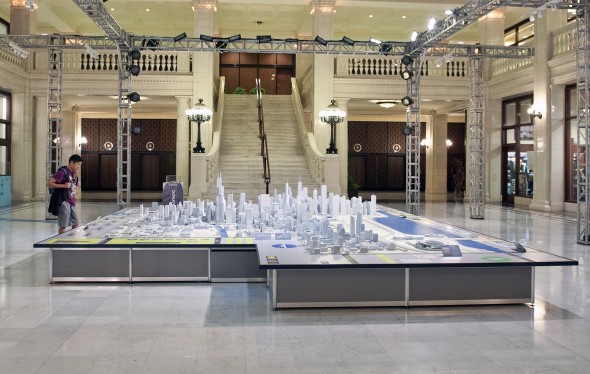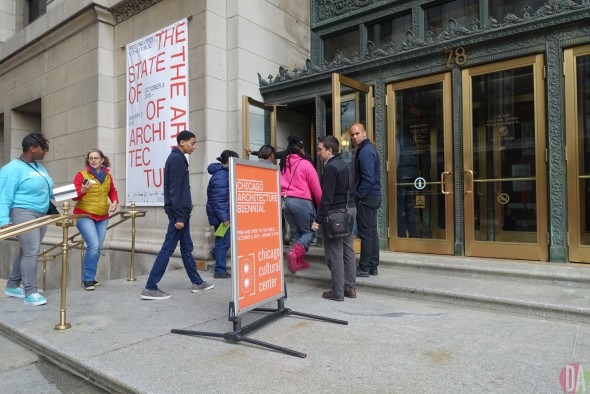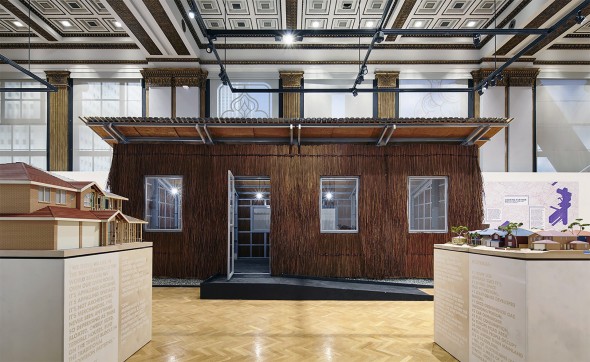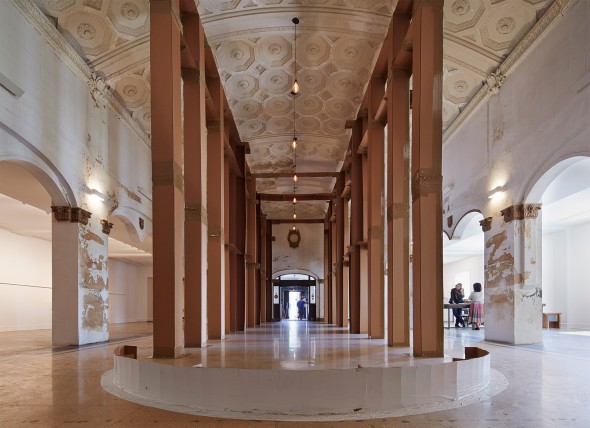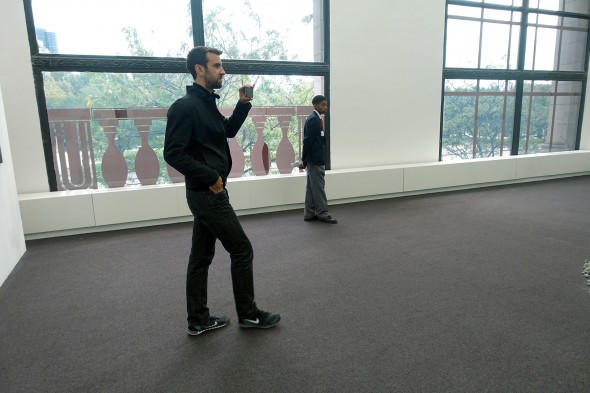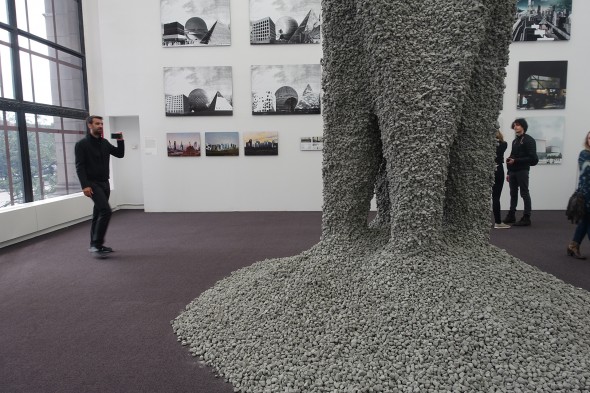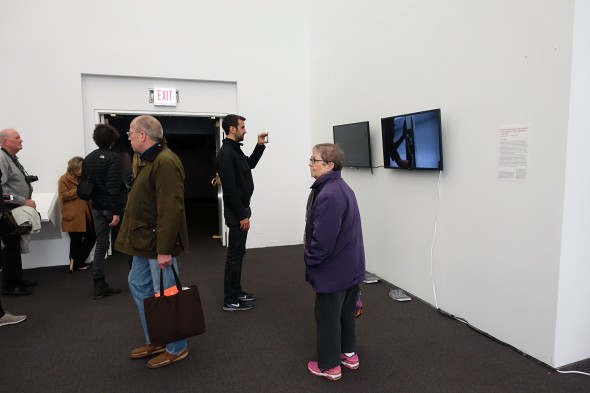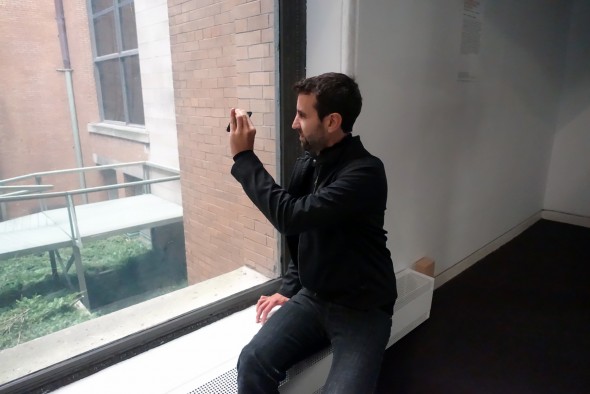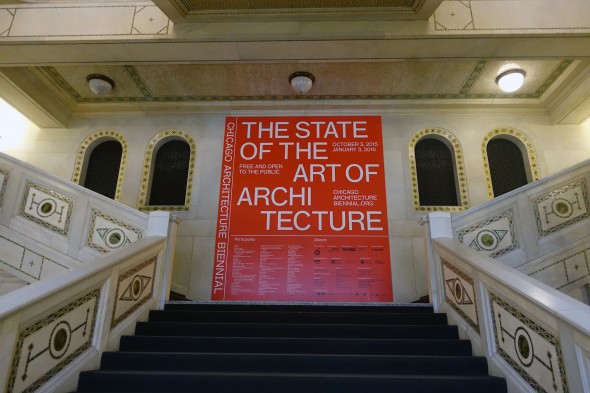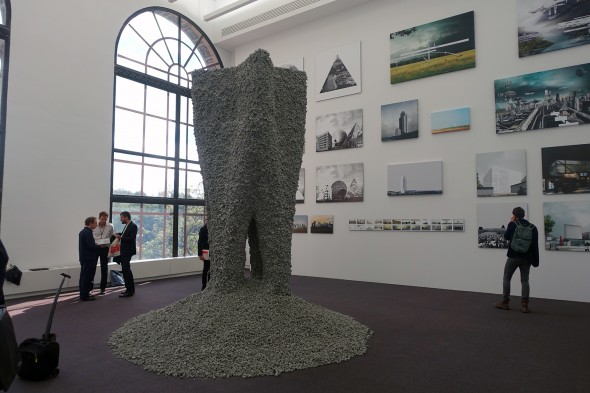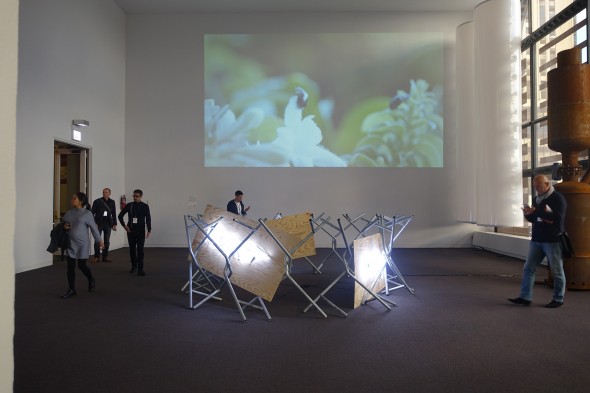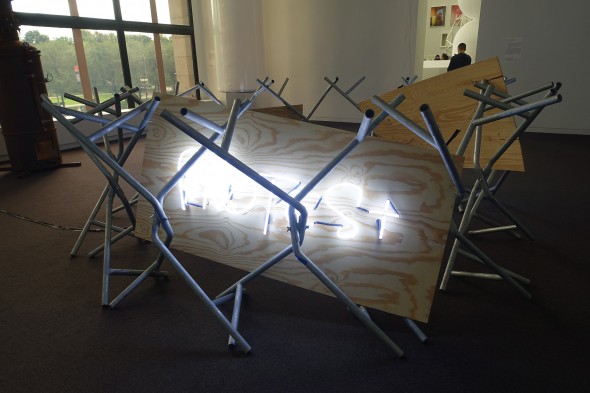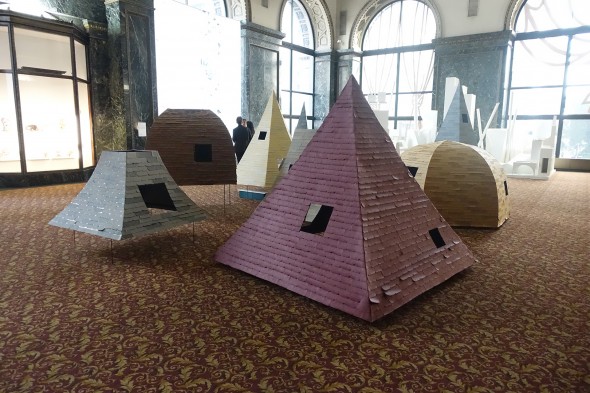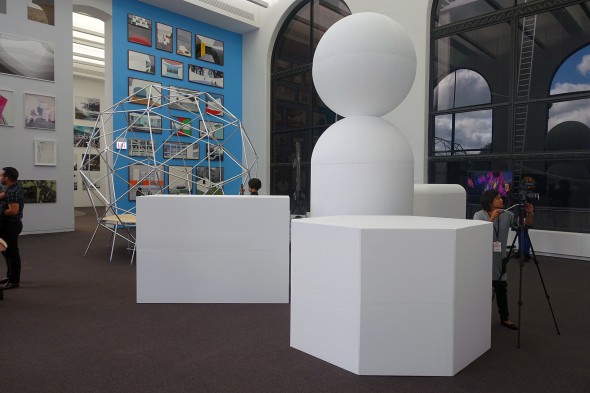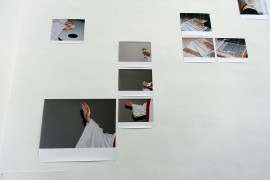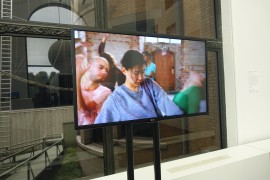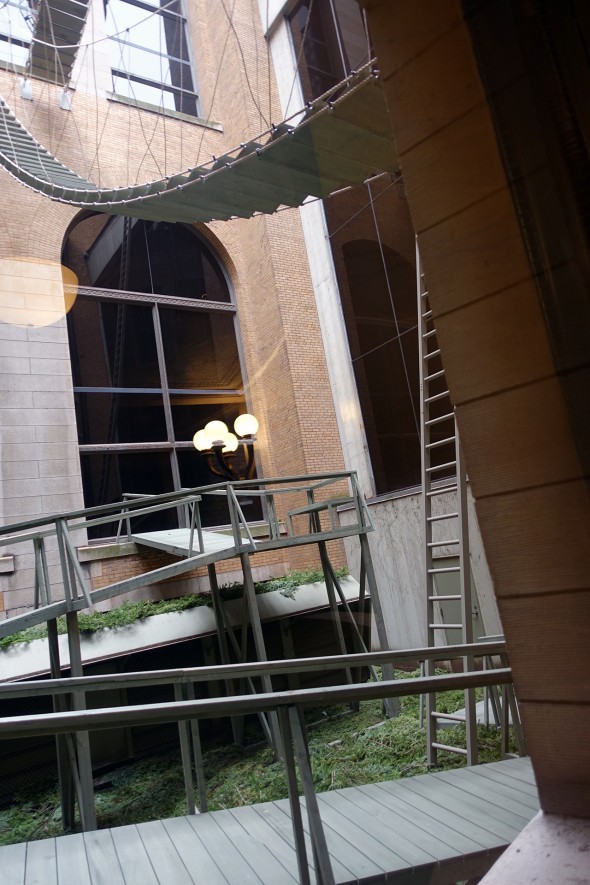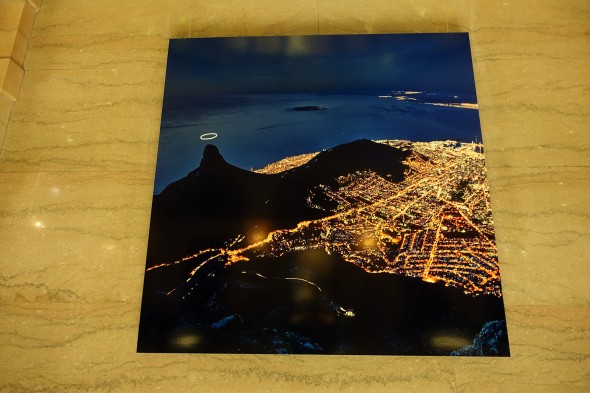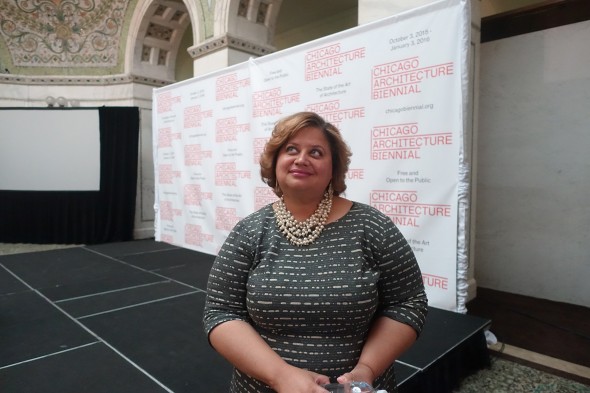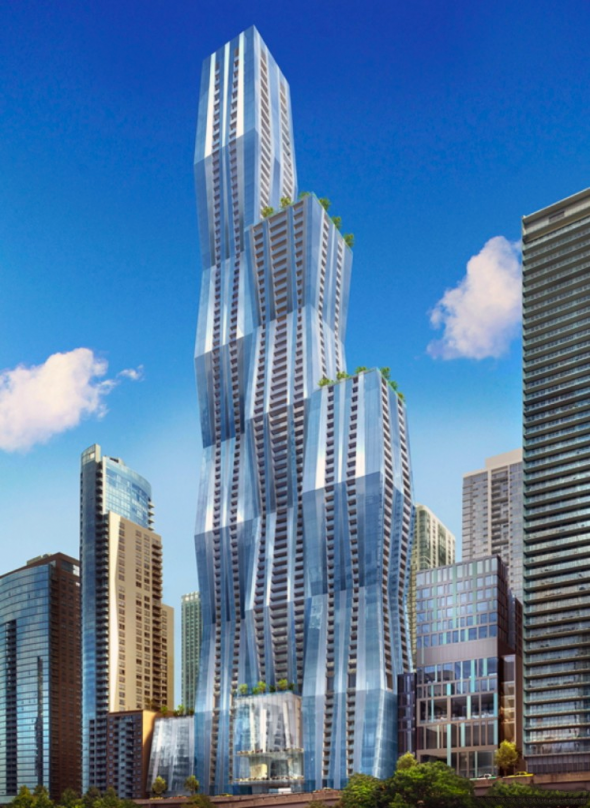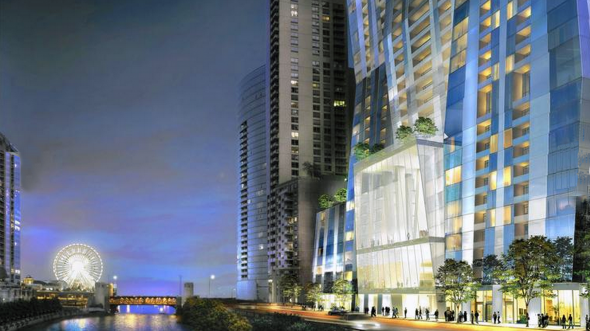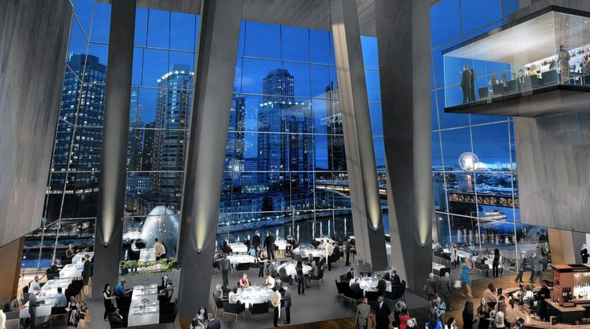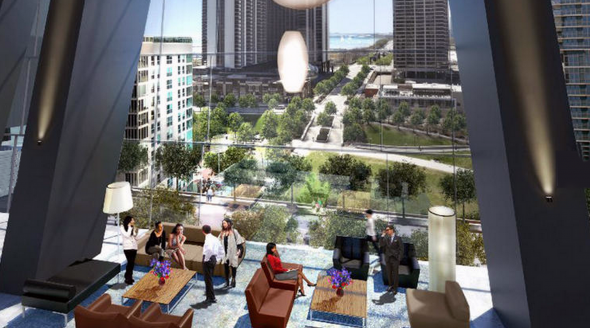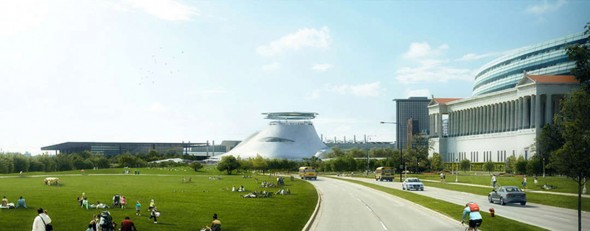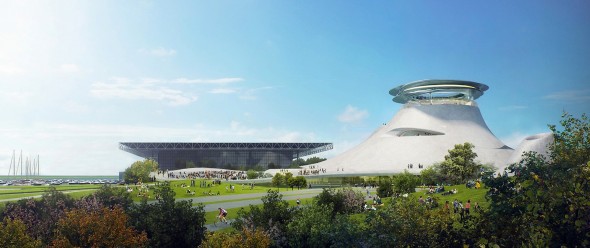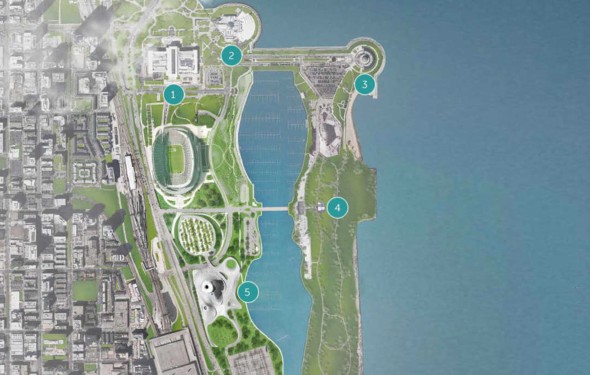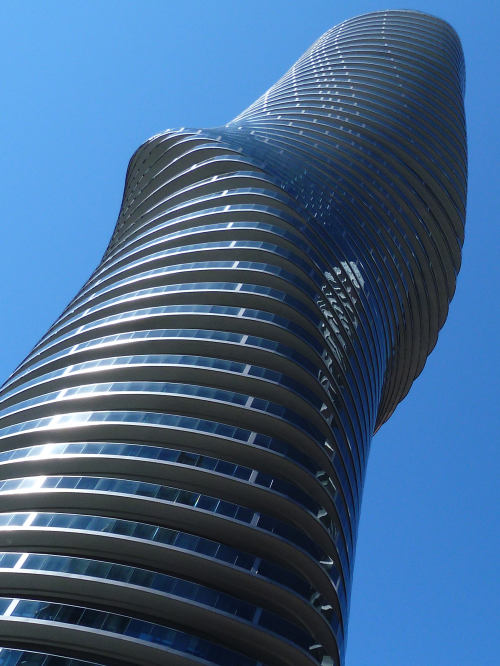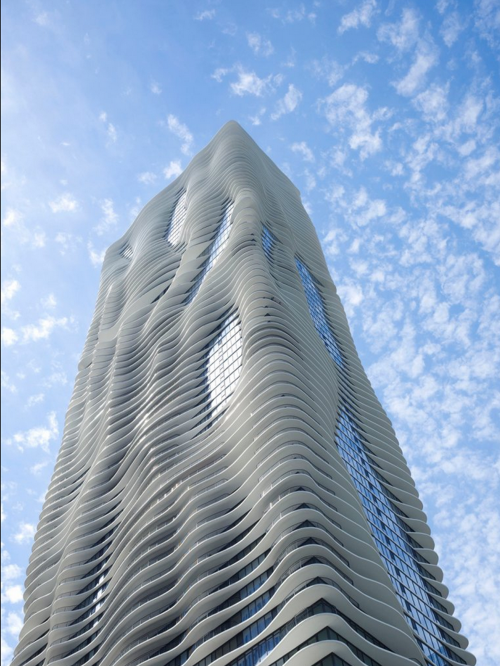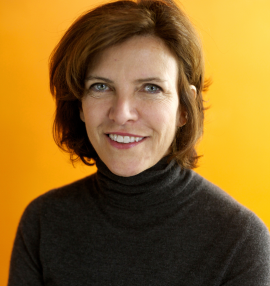the first chicago architecture biennial is the largest architecture and design festival ever to be held in north america | courtesy iwan baan
Chicago is billing the 2015 Chicago Architecture Biennial (CAB) as North America’s biggest survey of international contemporary architecture, but the event is not alone. Besides Venice, whose architecture biennial began in 1980, cities worldwide hold biennial exhibitions of art, design and architecture year-round.
The first biennial, which has secured a $2.5 million lead grant from British oil and gas giant BP, is planned for 3 October 2015, through 3 January 2016. Mayor Rahm Emanuel personally solicited the lead, $2.5 million donation for the biennial from BP. The city’s biennial will present scale models, photographs and more unconventional displays hosted at the Chicago Cultural Center.
The event organizers have Chicago holding its architecture biennial in odd-numbered years with Venice historically presenting even-numbered years. The experts say this is a 10-year, five in Chicago, trial run. DesignApplause is optimistic.
The event will be “the Davos of architecture,” said the co-artistic director of the Chicago biennial, Sarah Herda, referring to the Swiss city that hosts global business and political leaders at its World Economic Forum. Herda is the executive director of the Chicago-based Graham Foundation, a grant-making architecture organization that has partnered with the city to host the biennial. Joseph Grima is the other co-artistic director, an architect and writer who co-curated the 2012 Istanbul design biennial.
There will be no admission charge for the Chicago biennial. The Venice event two-day ticket price is 30 euros ($41). The target audience will be architects and designers, cultural mavens, students and tourists.
Below is a schedule of public events. Some events will require an RSVP. [ chicago architecture biennial ] [ graham foundation ]
[ wednesday 30 september ]
4:30–6 PM Panel: Death and Afterlife of the Post-Industrial City
Location> The School of the Art Institute of Chicago, SAIC Ballroom, 112 South Michigan Avenue
Presented by the Department of Art History, Theory and Criticism at the SAIC in collaboration with the Department of Architecture and Design at MoMA, New York and the Elkones Institute (Basel), with additional support from the Shapiro Center for Research and Collaboration and the Department of Architecture, Interior Architecture, and Designed Objects.
Free and open to the public
5:30 PM UIC School of Architecture, Fall 2015 Lecture Series: Tatiana Bilbao Principal, Tatiana Bilbao Estudio, Mexico City, Mexico
Location> 1100 Architecture + Design Studios, 845 West Harrison Street
Free and open to the public
6:30 PM Chicago Architectural Club: Burnham Prize & Currencies of Architecture Exhibition Opening
Location> Chicago Architecture Foundation, 224 South Michigan Avenue
Free and open to the public
[ thursday 1 october ]
2-5 PM House Housing + We, Next Door exhibit
Location> 1322 West Taylor Street
Presented by the National Public Housing Museum and Columbia University
Free and open to the public
2:30 PM Screening of Infinite Happiness
Location> AMC River East 21, 322 East Illinois Street
4–6PM Outside Design Exhibit Artist Talk and Reception with, David Benjamin, Eric Ellingsen David Hays, Joyce Hwang, and Emmanuel Pratt
Location> The Art Institute of Chicago, 112 South Michigan Avenue
Hosted by the School of the Art Institute of Chicago
Free and open to the public
5-7:30 PM James Wines: SITE Specific - Architectural Drawings 1979 to 2012 | Opening Reception
Location> Rhona Hoffman Gallery, 118 North Peoria Street
Free and open to the public
5:30-8 PM International Perspectives | Chicago and the Future of Urban Change
Location> The Art Institute of Chicago’s Rubloff Auditorium, 111 S Michigan Avenue
Presented by Van Alen Institute and the Architecture & Design Society of the Art Institute of Chicago
Free and open to the public
5–8 PM Barbara Kasten: Stages Opening Reception
5PM Opening Remarks by Barbara Kasten and ICA curator Alex Klein
Location> The Graham Foundation, 4 West Burton Place
Free and open to the public
[ friday 2 october ]
1-2:15 PM Biennial Participant Roundtable Moderated by Beatrice Galilee and José Esparza
Location> Claudia Cassidy Theater at the Chicago Cultural Center, 77 East Randolph Street
Online RSVP via Chicago Architecture Biennial Website
2:30-4 PM Biennial Participant Roundtable Moderated by Emiliano Gandolfi and Awarding of the Curry Stone Design Prize
Location> Claudia Cassidy Theater at the Chicago Cultural Center, 77 E. Randolph Street
Online RSVP via Chicago Architecture Biennial Website
4:30 PM Theatre: Performance by Santiago Borja
Location> Carr Chapel, IIT, 65 East 32nd Street
Free and open to the public
4:30 PM Superpowers of Ten: Performance by Andrés Jaque / Office for Political Innovation
Location> The Tank, Chicago Athletic Association, 12 South Michigan Avenue
Free and open to public. Online RSVP via Chicago Architecture Biennial Website
6 & 6:15PM We Know How to Order: Performance by Bryony Roberts and South Shore Drill Team
Location> Federal Plaza, Chicago
Free and open to the public. Online RSVP via Chicago Architecture Biennial Website
6:30 – 10PM New Horizon_architecture from Ireland at the Chicago Design Museum
Location> Chicago Design Museum, Block Thirty Seven, 108 North State Street, 3rd Floor
Irish Design 2015 in partnership with the Chicago Design Museum
RSVP to rsvp@chidm.com
8 PM Superpowers of Ten: Performance by Andrés Jaque / Office for Political Innovation
Location> The Tank, Chicago Athletic Association, 12 South Michigan Avenue
Free and open to public. Online RSVP via Chicago Architecture Biennial Website
8 PM Theatre: Performance by Santiago Borja
Location> Carr Chapel, IIT, 65 East 32nd Street
Free and open to public
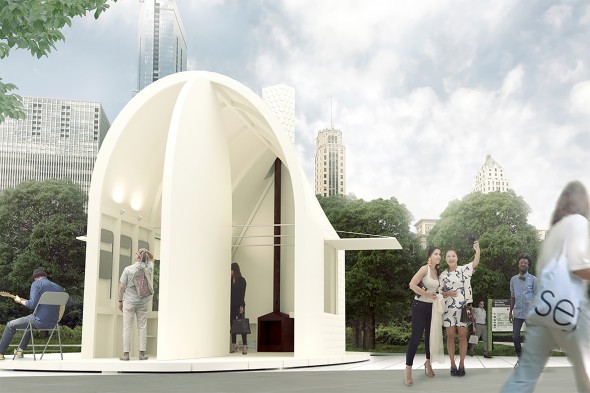
lekker architects’ proposal was a finalist in the [ lakefront kiosk competition ] | courtesy lekker architects
[ saturday 3 october ]
12:30 PM We Know How to Order: Performance by Bryony Roberts and South Shore Drill Team
Location> Federal Plaza, 219 South Dearborn Street
Free and open to the public
1 PM We Know How to Order: Performance by Bryony Roberts and South Shore Drill Team
Location> Federal Plaza, 219 South Dearborn Street
Free and open to the public
12:30-2 PM Metropolis Preserving Postmodernism Panel: postmodernist architecture: preservation’s new frontier
Location> Chicago Cultural Center, 77 E. Randolph Street
Online RSVP via Chicago Architecture Biennial Website
4:30 PM Superpowers of Ten: Performance by Andrés Jaque / Office for Political Innovation
Location> The Tank, Chicago Athletic Association, 12 South Michigan Avenue
Free and open to the public. Online RSVP via Chicago Architecture Biennial Website
5-8 PM Night of Illumination: Opening Celebration at Stony Island Arts Bank
Location> 6760 South Stony Island Avenue
Online RSVP via https://night-of-illumination.eventbrite.com
[ sunday 4 October ]
7 AM Amanda Williams’ Color(ed) Theory House Painting: Flamin’ Red Hots
Location> 5703 South Lafayette
The event is free but requires RSVP. Inquire at www.awgallery.com
2–3:30PM Thinking into the Future: A Conversation with John Ronan
Location> Preston Bradley Hall in the Chicago Cultural Center, 77 East Randolph Street
Presented in Collaboration with the Frank Lloyd Wright Trust
Online RSVP via Chicago Architecture Biennial Website





